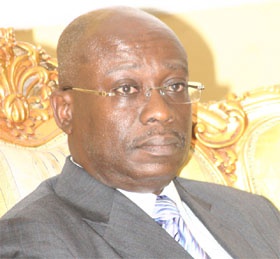
Dr. Tony Oteng-Gyasi, Chief Executive Officer of Tropical Cables and Conductors Limited is against proposals advanced by the Volta River Authority (VRA) for government to consider shutting down VALCO to mitigate impacts of the current energy crisis.
The former Association of Ghana Industries (AGI) President said shutting down the aluminum smelter is not the solution to the on-going crisis.
“VALCO is a major industrial undertaking. Shutting it down is not the solution to the crisis. Producers should be seeking to generate at full capacity so we can supply the 380 megawatts that VALCO needs to operate,” he said.
The push for VALCO to be shutdown has arisen as the country is currently experiencing a generation shortfall occasioned by poor rainfall for hydro-power generation and challenges with running all available thermal plants at full capacity, resulting in a shortfall of about 350megawatts.
The situation has led to the implementation of an electricity rationing programme by the electricity distributor, the Electricity Company of Ghana -- to the dismay of industry and households.
However, the former Association of Ghana Industries boss believes that “people need jobs more than they need light in their homes”. Actually, the growth in electricity demand has primarily been driven by domestic consumption.
Currently, a large percentage of the power generated in this country, around 62 percent, is consumed domestically -- leaving very little for commercial and industrial use. Commercial consumption- which describes power consumed by small or micro-businesses - accounts for 18 percent. Industrial or large-scale consumption accounts for 20 percent of the total power produced.
Energy experts contend that the consumption trend must be overturned to favour industries so as to create employment, as pertains in other economies.
Kenya, for instance, generates about 7,593GW/h of electricity from hydro, wind, thermal and geothermal sources. Of this, 2,433 million KW/h is consumed by domestic users and about 3,440 million KW/h is used by the industrial sector.
VALCO, which is one of the largest employers in the country, currently employs a fraction of what it is supposed to, due to on-going power challenges that have limited the amount of power it receives for production.
VRA in 2013 strongly advised government to shutdown VALCO as one of the options to prevent the country from plunging into deep energy crisis.
Option one, according to the VRA, was to generate 5,300GWh of hydropower as a best case scenario, but otherwise requiring about 1,250GWh of load-shedding or 179MW of additional capacity in 2014.
The second option was the generation of 5,300GWh of hydropower plus the shutdown of heavy power consumer- VALCO - but requires about 100MW load-shedding or additional generation.
The third option presented to the ministry was the generation of 6,000GWh or 6,100GWh that required VALCO’s shutdown last year. This, however, would have prevented the likelihood of the Akosombo reservoir’s failure this year.
The final option was the generation of 6,700GWh hydropower. This option, the report noted, “requires no load-shedding in 2014, but reservoir failure is very likely in 2015 and 5% more risky than Option two”.
The estimated demand is growing, and current projections indicate that the country’s requirements for electricity will hit 2,764.2MW this year.
For a country using under 2,000megawatts of electricity currently, Ghana ought to be bringing on-stream 200megawatts of new capacity every year. This additional capacity requires US$200million of annual investment.